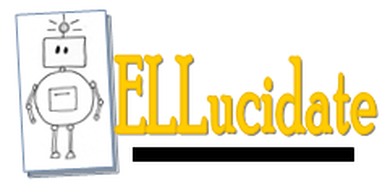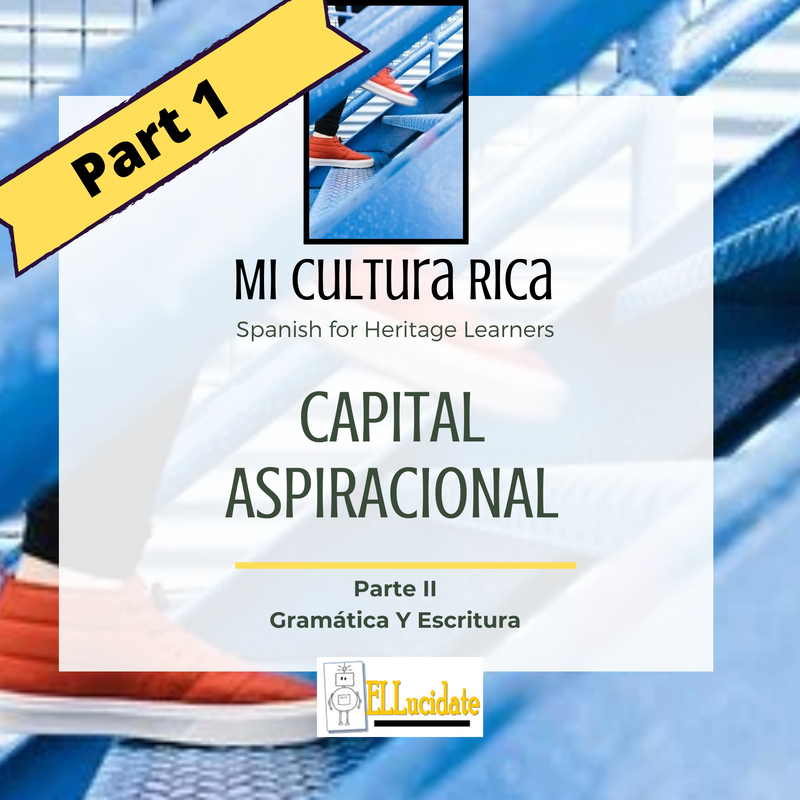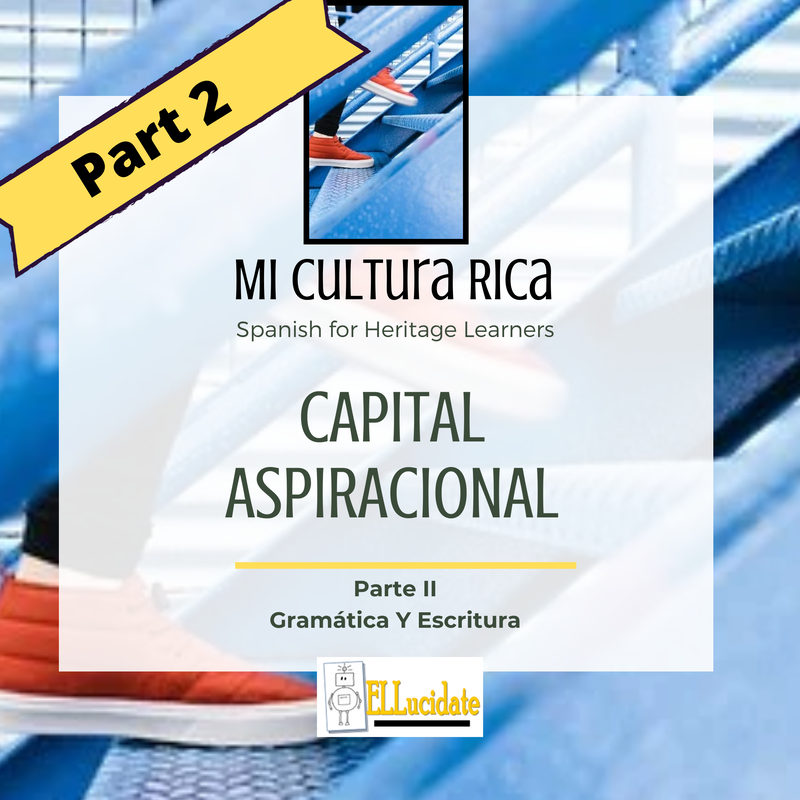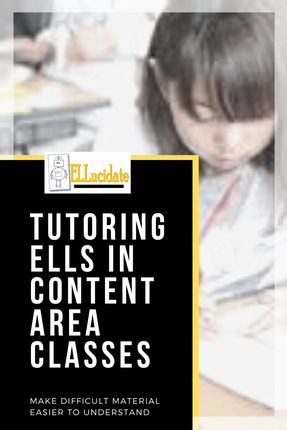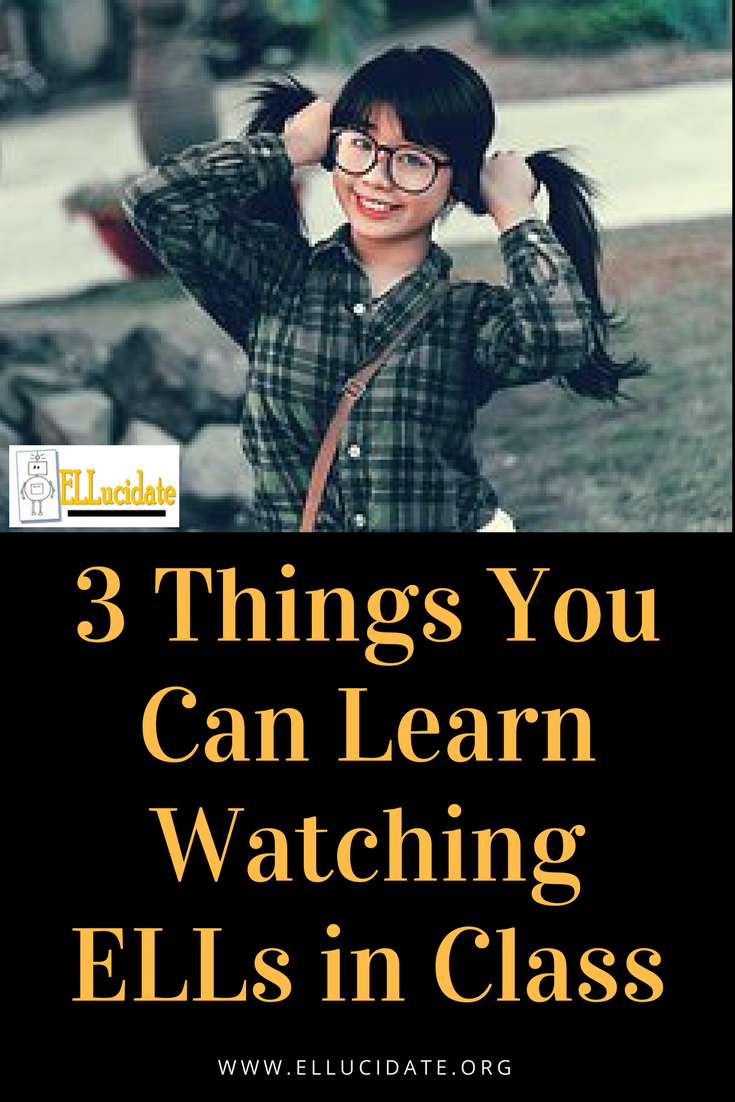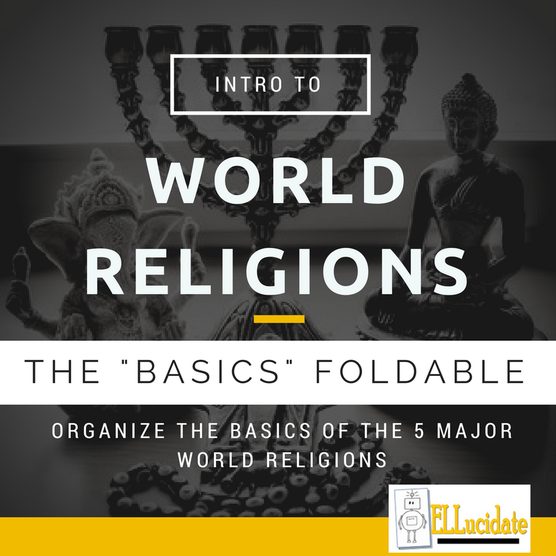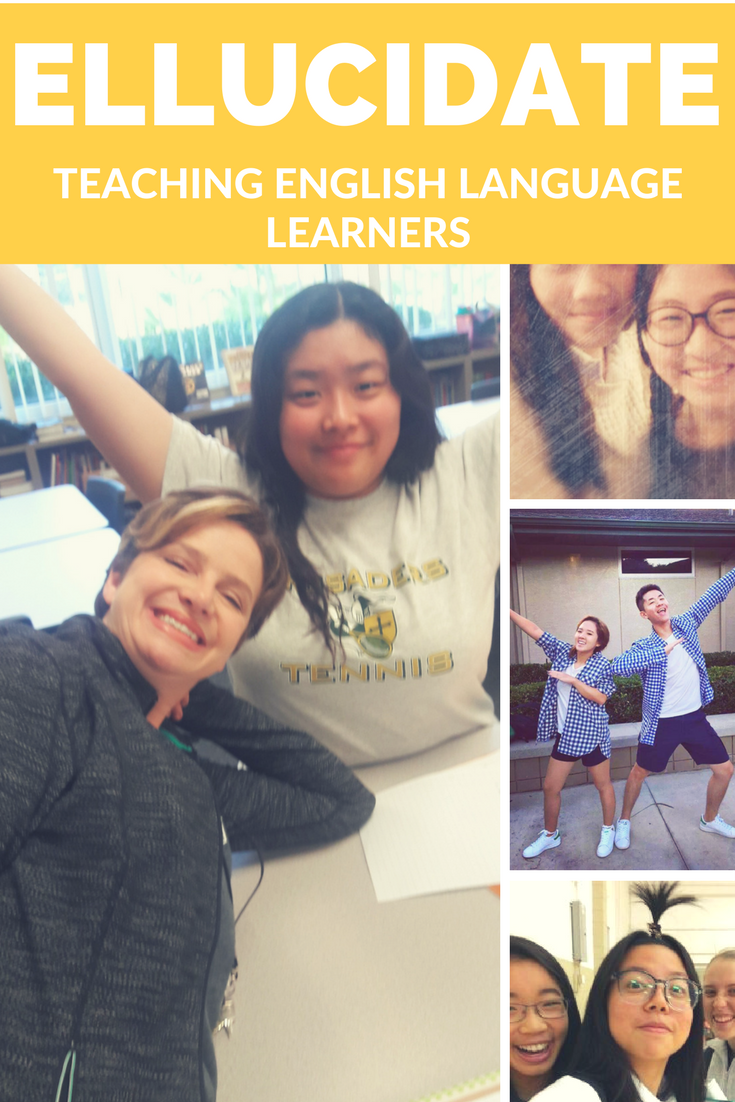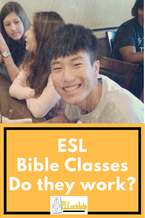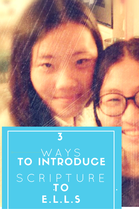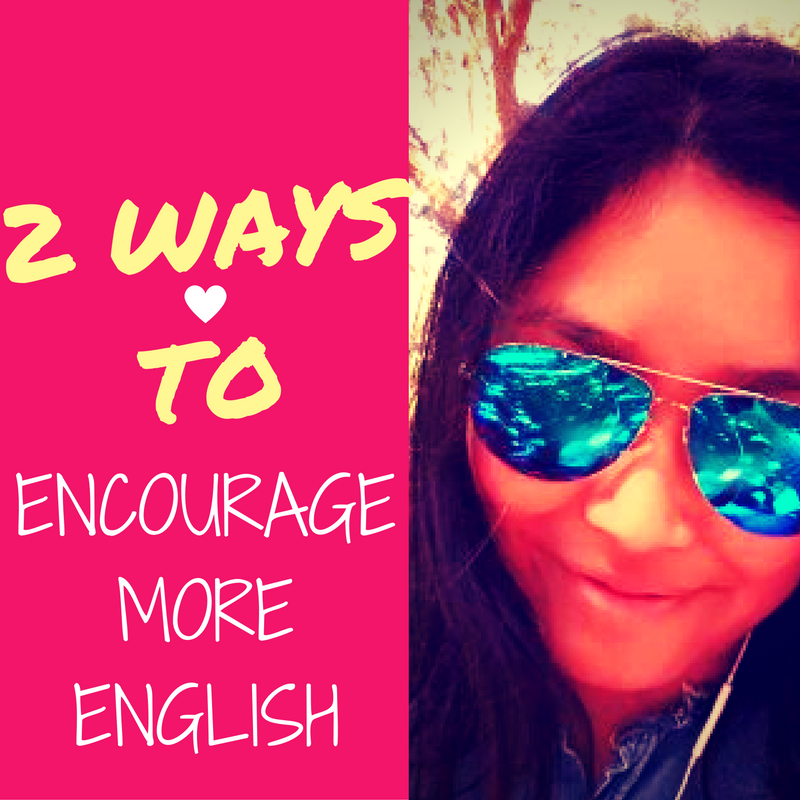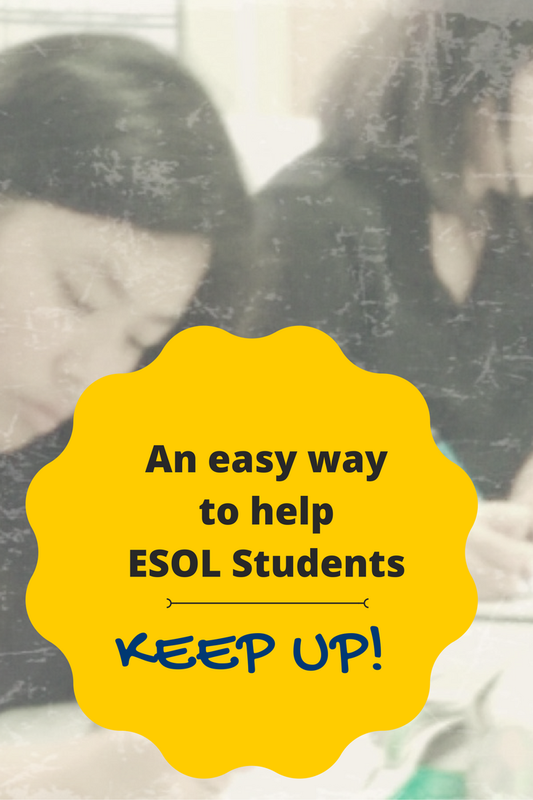|
It is my hope and goal this coming school year to instill in my ELL and Heritage Learner students a high value for their cultural wealth. I desire to inspire in them an understanding of their resources and a vision for their futures. With the great turmoil in our nation right now, the last things I want my students to feel is fear, anger or victimization. With that thought in mind I have begun writing a curriculum for my Spanish for Heritage Learners class and an ELL/ESL class based on the writings of Tara Yosso and Patricia Gándara. Their research and writings on cultural capital have inspired a series of units focusing on the following resources:
The Capital Aspiracional unit guides students in examining the aspirations of Latino immigrants and the generations that follow them and how those hopes and dreams are an invaluable resource. I believe these 5 units will take us through the school year as we learn to read, write, listen to and speak in English or Spanish. Each unit focuses on one aspect of cultural wealth and includes vocabulary, research activities, grammar, writing activities and assessments.
Capital Aspiracional is the first unit in the Mi Cultura Rica series for Spanish Heritage Learners. This series gives students the opportunity to focus on the strengths and resources of their culture. The Capital Aspiracional unit guides students in examining the aspirations of Latino immigrants and the generations that follow them and how those hopes and dreams are an invaluable resource. Part I contains vocabulary, research activities, discussion prompts, a quiz and a teacher key. You can complete the unit there or, if you would like to add a writing component, Part II contains grammar, writing activities, a quiz and a teacher key. I am offering my units on Teachers Pay Teachers. Leave any questions in the comments box below.
0 Comments
These are easy to teach but, more importantly, are easy for students to do independently as they take ownership of their own learning.
American History, Religion and Science classes are fraught with difficulties for an ELL. Usually, they have no background schema in the subject from which to draw therefore the concepts are just as difficult as the vocabulary. I’ve arranged with our history teacher to receive an electronic copy of the notes he provides for students in his class. He uses these notes as a springboard for lectures, class discussions, text scaffolding and assessment questions. Here’s what I do with them during a week of tutoring sessions:
Boosting the Confidence of Heritage Learners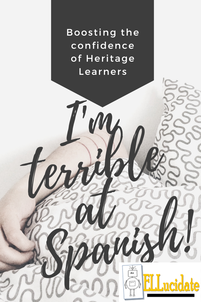 Change is inevitable and abundant! This has proven true in my life recently: I have moved from hot, hot, hot Florida to cozy Wisconsin and have also changed jobs. With a new town and a new school, I have found a different set of students (of course!) Although my new school has an international program, the students they host are usually one-year European students with high English proficiency. There is a much smaller need for ELL work. My ELL responsibilities are now simply an addition to my main role as Spanish teacher instead of my sole responsibility. (That won’t keep me from blogging about it!) I had to adjust to the needs of my new school and found myself a fun project on which to expend some of my creative juices. After teaching Spanish I, II and III last year I asked my administration if I could start a Spanish for Heritage Learners class for the 2019-20 school year. They said yes! In fact, they loved the idea almost as much as me! Why did we need a Spanish for Heritage Learners class? Let me explain. In my Spanish I, II and III classes I had a range of students that already speak Spanish. They signed up for Spanish classes usually because they lacked any confidence in their academic abilities in Spanish although they would never explain it like that. They would say things like, “Mrs. Newberry, I’m terrible at Spanish! ” Technically that wasn’t true. Usually, they are bilingual, just not biliterate. Once I explained the difference, they got interested and I saw an immediate boost of confidence. “Do you mean I’m not stupid?” In addition to that, these kids vacillated from being bored to tears through half of a Spanish course (the learning vocabulary part) or freaked out and failing the other part (the reading and writing part.) Spelling, grammar, phonetics….all alien concepts. These kids were speaking fluent, conversational Spanish but their literacy skills were elementary at best! The first thing I did was sign up for the Heritage Leaners course run by CARLA (The Center For Advanced Research on Language Acquisition.) There was a summer session held at the University of Minnesota which is not far from my new digs in Wisconsin. I learned piles of information and met with like-minded educators from around the country. I highly recommend joining the Facebook group Teachers of Spanish Heritage Speakers to hear questions and answers from newbies and experienced Heritage Learner teachers. So, my blog will no doubt have a wider expanse of topics as I work through my first year teaching Spanish for Heritage Learners. I hope to hear from you as well! Let me know what’s happening in your Spanish, ELL or Heritage Learning language classes!
Part of my job is to provide training and coaching to our mainstream teachers as they develop lesson plans that include ELLs.
In this post I want to focus on the Iast one. I encourage our mainstream teachers to spend some time in my sheltered classes. I want them to, at the very least, observe the students learning in a safe/comfortable environment. At best, I want our mainstream teachers to interact with a lesson in a personal way with our ELL’s. The benefits of a teacher seeing a normally quiet, socially reclusive, or awkward student in a “safe” environment are many, but here are 3: 1.) Such an experience immediately changes the teacher’s understanding of a student’s language proficiency level. 2.) Watching me interact with the full confidence of the student’s academic ability increases the mainstream teacher’s awareness of scholastic capabilities. 3.) Finally, observing conversations in which I don’t understand a student linguistically (or they don’t understand me) allows another teacher to pick up comprehension techniques and maneuvers as I work with a student to achieve clear communication. Teachers observing other teachers is a cheap and easy way to accomplish professional development/training. Mainstream teachers observing a sheltered class may note:
Seeing an ELL in action within a safe environment can build confidence in the teacher as get to know the student and see techniques useful for ELLs. It also allows the student to achieve a new comfort level with another teacher. Combine a hands-on activity with online research! Great for use in the Religion, Social Studies, Human Geography classroom and more. This printable gives students the task of researching the "Basics" of the 5 Major World Religions: Christianity, Islam, Hinduism, Buddhism, and Judaism. They can work independently, in small groups, or together as a class. Also a great activity for substitute work when you're away from your class.
|
|
